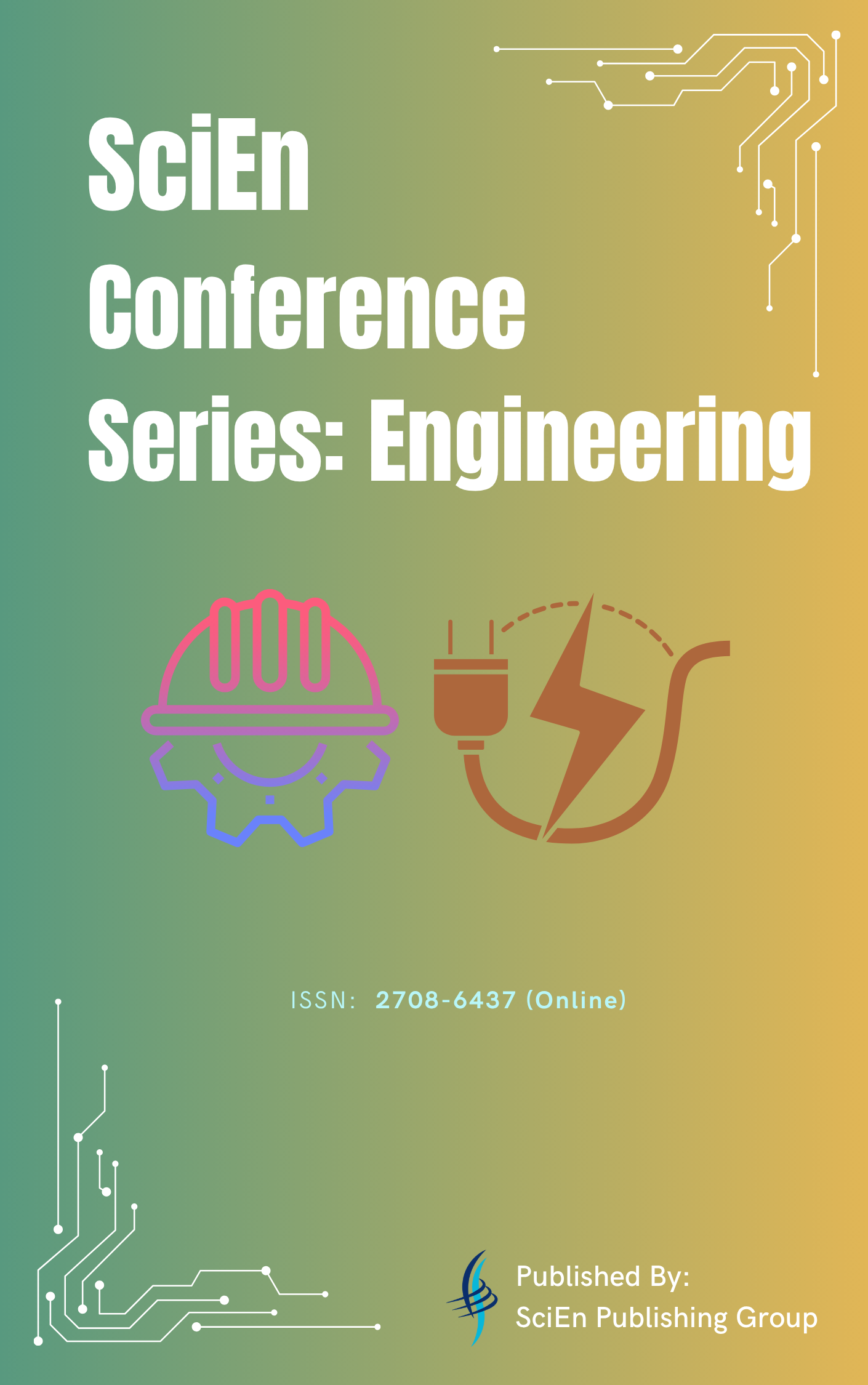Assessment of Arsenic and Copper Pollution of the Benya Lagoon, Ghana By Neutron Activation Analysis
DOI:
https://doi.org/10.38032/jea.2021.04.004Keywords:
Benya Lagoon, Heavy Metal Pollution, Health Risk, INAA, Good Drinking WaterAbstract
Heavy metal concentrations in some water bodies and the soil beneath these waters. These would have detrimental consequences on these water users and consumers of the fish in that water. Instrumental Neutron Activation Analysis technique using the Ghana Research Reactor-1 was employed to find out the concentrations of two heavy metals, Arsenic (As) and Copper (Cu) in the sediments, fishes, and water collected from the Benya Lagoon in the KEEA, Ghana. Cumulatively, Copper was found to be greater in concentration than Arsenic concerning the three parts of the ecology under study. On the other hand, Arsenic was more concentrated in the sediments than Copper, and Copper was more concentrated in the water and fish than Arsenic. Cumulatively, the level of contamination of Arsenic and Copper decreased in the order fish > sediment > water. Though Arsenic and Copper were found in elevated amounts in both water and fish which rendered the Lagoon water unsuitable for human use and the fish from the Lagoon unsafe for consumption, their concentrations in the sediment were found to have a low ecological risk index on the environment.
References
Akoto, O., Bruce, T.N. and Darko, D., 2008. Heavy metals pollution profiles in streams serving the Owabi reservoir. African Journal of Environmental Science and Technology, 2(11), pp.354-359.
Reza, R. and Singh, G., 2010. Heavy metal contamination and its indexing approach for river water. International journal of environmental science & technology, 7(4), pp.785-792. DOI: https://doi.org/10.1007/BF03326187
Gadd, G.M., Garbisu, C. and Alkotra, L., 2003. Review basic concepts on heavy metal soil bioremidation. The European Journal of Mineral Processing and Environmental Protection, 3, pp.58-66.
Nouri, J., Mahvi, A.H., Babaei, A. and Ahmadpour, E., 2006. Regional pattern distribution of groundwater fluoride in the Shush aquifer of Khuzestan County, Iran. Fluoride, 39(4), pp.321-325.
Nouri, J., Mahvi, A.H., Jahed, G.R. and Babaei, A.A., 2008. Regional distribution pattern of groundwater heavy metals resulting from agricultural activities. Environmental Geology, 55(6), pp.1337-1343. DOI: https://doi.org/10.1007/s00254-007-1081-3
Ochieng, E.Z., Lalah, J.O. and Wandiga, S.O., 2007. Analysis of heavy metals in water and surface sediment in five rift valley lakes in Kenya for assessment of recent increase in anthropogenic activities. Bulletin of environmental contamination and toxicology, 79(5), pp.570-576. DOI: https://doi.org/10.1007/s00128-007-9286-4
Parker T., 2015. Arsenic - An Essential Nutrient For Growth, Reference from http://www.articlesnatch.com/Article/Arsenic---An-Essential-Nutrient-For-Growth/1948700, Accessed 04/02/2015.
Arsenic And Arsenic Compounds, International Agency for Research on Cancer (IARC)- Summaries & Evaluations Vol. 23, pg. 39, 1980. http://www.inchem.org/documents/iarc/vol23/arsenic.html, Accessed 10/12/2021.
Wilson L., MD 2011. Copper toxicity syndrome, The Center For Development, Reference from http://www.drlwilson.com/articles/copper_toxicity_syndrome.htm, Accessed 10/12/2021.
Eck P., and Wilson L., 1989. Toxic Metals in Human Health and Disease, Eck Institute of Applied Nutrition and Bioenergetics, Ltd., Phoenix, AZ.
Tabari, S., Saravi, S.S.S., Bandany, G.A., Dehghan, A. and Shokrzadeh, M., 2010. Heavy metals (Zn, Pb, Cd and Cr) in fish, water and sediments sampled form Southern Caspian Sea, Iran. Toxicology and industrial health, 26(10), pp.649-656. DOI: https://doi.org/10.1177/0748233710377777
Vowotor, M.K., Odumah Hood, C., Sackey, S.S., Owusu, A., Tatchie, E., Nyarko, S., Manu Osei, D., Mireku, K.K., Letsa, C.B. and Atieomo, S.M., 2014. An assessment of heavy metal pollution in sediments of a tropical lagoon: A case study of the Benya Lagoon, Komenda Edina Eguafo Abrem Municipality (KEEA)—Ghana. Journal of Health Pollution, 4(6), pp.26-39. DOI: https://doi.org/10.5696/2156-9614-4-6.26
Armah, F.A., Yawson, D.O., Pappoe, A.N. and Afrifa, E.K., 2010. Participation and sustainable management of coastal lagoon ecosystems: The case of the Fosu lagoon in Ghana. Sustainability, 2(1), pp.383-399. DOI: https://doi.org/10.3390/su2010383
Jones, D.S., Suter, G.W.II. and Hull, R.N., 1997. Toxicological benchmarks for screening contaminants of potential concern for effects on sediment-associated biota: 1997 revision. Oak Ridge National Lab., TN (United States). DOI: https://doi.org/10.2172/258038
Contaminated Sediment Standing Team., Consensus-based sediment quality guideline:recommendation for use and application. Washington D.C.: Wisconsin Department of Natural Resources; (2003), Reference from http://dnr.wi.gov/topic/brownfields/documents/cbsqg_interim_final.pdf, Accessed 05/02/2015.
Martin, J.M. and Meybeck, M., 1979. Elemental mass-balance of material carried by major world rivers. Marine chemistry, 7(3), pp.173-206. DOI: https://doi.org/10.1016/0304-4203(79)90039-2
Duzgoren-Aydin, N.S., 2007. Sources and characteristics of lead pollution in the urban environment of Guangzhou. Science of the Total Environment, 385(1-3), pp.182-195. DOI: https://doi.org/10.1016/j.scitotenv.2007.06.047
Dumčius, A., Paliulis, D. and Kozlovska-Kędziora, J., 2011. Selection of investigation methods for heavy metal pollution on soil and sediments of water basins and river bottoms: a review. Ekologija, 57(1), pp.30-38. DOI: https://doi.org/10.6001/ekologija.v57i1.1307
Liu, J., Li, Y., Zhang, B., Cao, J., Cao, Z. and Domagalski, J., 2009. Ecological risk of heavy metals in sediments of the Luan River source water. Ecotoxicology, 18(6), pp.748-758. DOI: https://doi.org/10.1007/s10646-009-0345-y
Webster , I. R. 1994. Marine Pollution Bulletin, 28(11), pp. 653-661. DOI: https://doi.org/10.1016/0025-326X(94)90300-X
Food and Nutrition Board, 2001. Intake Applications in Dietary Assessment, National Academy Press, Washington DC.
Owusu B. S., Kuwornu L. and Lomo A., (2005). Annex 5: Integrated Irrigation-Aquaculture Development and Research in Ghana. In FAO Report, Reference from http://www.fao.org/docrep/005/y2807e/y2807e0g.htm, Accessed 10/12/2021.
Laar, C., Fianko, J.R., Akiti, T.T., Osae, S. and Brimah, A.K., 2011. Determination of heavy metals in the black-chin tilapia from the Sakumo Lagoon, Ghana. Research Journal of Environmental and Earth Sciences, 3(1), pp.8-13.
Republic of Ireland Environmental Protection Agency, Parameters of Water Quality; Interpretation and Standards, 2001.
Downloads
Published
Issue
Section
License
Copyright (c) 2021 Michael Kwame Vowotor, Raymond Edziah, Samuel Sonko Sackey, Emmanuel Kofi Amewode, Sandra Baaba Frempong

This work is licensed under a Creative Commons Attribution-NonCommercial 4.0 International License.

